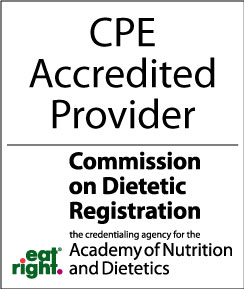1:00 – 5:00 pm
San Diego Hilton Bayfront, Indigo D
Program Description
The coupling of exercise and nutrition holds the promise of nurturing a healthy lifestyle that can prevent age-related and obesity-associated chronic diseases including type 2 diabetes mellitus, cardiovascular diseases, and sarcopenia. In 2008, 25.4% of U.S. adults reported no leisure time physical activity. Data from a 2007 worldwide survey conducted by the WHO in 212,021 adult participants found that the prevalence of physical inactivity ranged from 1.6% to 51.7% for men and from 3.8% to 71.2% for women. Physical inactivity was generally high for older age groups and lower in rural as compared to urban areas. In addition to diet, social and cultural influences, lifestyle habits, motivation and training influence the adoption of healthy active lifestyles. Without proper nutrition, activity levels may not be sustained adequately for health benefits, recovery from usual muscle strain and injuries may be slower. One of the most striking and debilitating age-associated alterations is the progressive loss of fat-free skeletal muscle mass, a phenomenon known as sarcopenia. This loss of muscle mass and strength and the increase in body fat with aging are physiological phenomena that occur in part as a consequence of metabolic changes associated with a sedentary lifestyle in older adults. A chronic sedentary lifestyle can lead to a decreased resistance to stressors resulting in cumulative systemic declines.
This symposium will focus on the importance of physical activity and its appropriate nutritional support in the global nutrition transition which involves combating both leisure time physical inactivity and obesity. The geographic linkage of inactivity, obesity, and diabetes is well-documented both in the US and globally by the World Health Organization. However, more attention is needed with regard to the amount of exercise needed for a health benefit, the specific nutritional requirements during prolonged exercise, the roles of specific nutrients, and strategies for encouraging more leisure time physical activity. Understanding the interaction of nutrition and physical activity may help contribute to efforts to reduce the negative impacts of the global nutrition transition through public policy, while evaluation of the impact of certain nutrients when exercising may help in the implementation of future strategies integrating diet and exercise advice for individuals.
Learning Objectives
CPE Credit Designation Statement
ASN designates this educational activity for a maximum of 4 CPEUs. Dietitians and dietetic technicians, registered should only claim credit commensurate with the extent of their participation in the activity. ASN (Provider #NS010) is accredited and approved by the Commission on Dietetic Registration (CDR) as a provider of Continuing Professional Education (CPE) programs for Registered Dietitians.
Learning Level 2
Suggested Learning Codes:
5190: Diabetes mellitus
2060: Immunology
2110: Physiology, exercise physiology
2000: Science of food and nutrition
Click here to complete the CPE evaluation.
At the end of this session, attendees will be able to:
- Identify the impact of leisure time physical inactivity in the US and globally on obesity and type 2 diabetes;
- Identify the impact of inactivity and sedentary lifestyle on age-related sarcopenia;
- Determine the amount of exercise needed to enhance insulin sensitivity and reduce visceral fat;
- Identify the impact of hydration and major macronutrients on muscle function in prolonged exercise, muscle recovery and the prevention of sarcopenia;
- Identify the interactions of contracting muscles on immune function; and
- Assess the potential of increasing physical activity from a practical and economic standpoint in the battle against the global nutrition transition including approaches to obesity and age-related sarcopenia.
Agenda
Click on the links below to view the recordings of each of the speakers. After watching, you may take the CPE evaluation for CPE credits (until April 2015).
Welcome and Opening, David Heber, MD, PhD, UCLA Center for Human Nutrition (1:00 – 1:10 pm)
The Importance of Nutrition and Physical Activity: A Public Health Perspective, Richard H. Carmona, MD, MPH, 17th Surgeon General of the United States (1:10 – 1:30 pm)
The Challenge of Getting People Active, James O. Hill, PhD, University of Colorado, Anschutz Health and Wellness Center (1:30 – 2:00 pm)
A Global Perspective on Leisure Time Physical Inactivity, Bill Kohl PhD, University of Texas Health Science Center, Houston, TX (2:00 – 2:30 pm)
Break (2:30 – 3:00 pm)
Exercise Dose-response Effects on Insulin Resistance, Fatness and Visceral Fat, John M. Jakicic, PhD, University of Pittsburgh (3:00 – 3:30 pm)
Muscle Cytokine Immune Effects and Sarcopenia, Charles T. Lutz, MD, PhD, University of Kentucky College of Medicine (3:30 – 4:00 pm)
Hydration, Carbohydrate, Protein, and Lipid Nutrition in Prolonged Exercise, Julian Alvarez, MD, PhD (4:00 – 4:30 pm)
Questions and Answers and Summation, David Heber, MD, PhD

